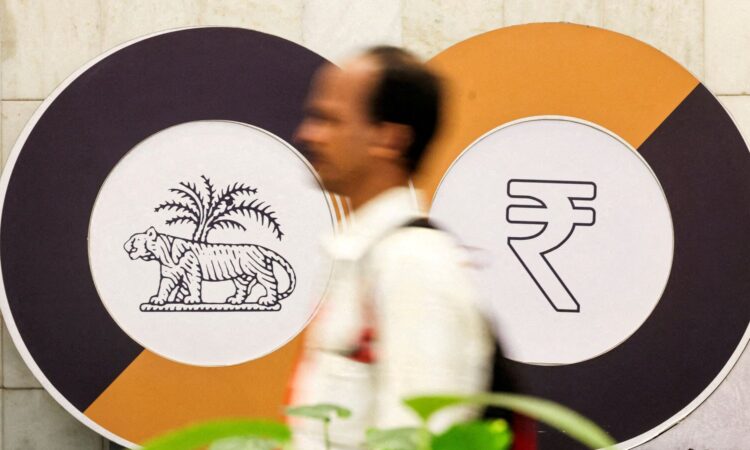
The International Monetary Fund (IMF) recently brought out a paper on the evolution of local currency debt markets during periods of economic turbulence. The paper notes that in “risk-off” episodes, emerging markets were hit rather hard. This may not be the case now.
While experts are divided on whether the global economy is currently in a risk-off situation, one point on which they are unanimous is that the Indian economy can withstand economic shocks.
Emerging market economies have held up remarkably well in recent years, even after periods of global financial turbulence, says the IMF in its report ‘Good Policies (and Good Luck) Helped Emerging Economies Better Resist Shocks’ of October 06, 2025. While favourable external conditions often helped, it’s clear that good policies matter.
In the past, “risk-off” episodes—when global investors indiscriminately sold riskier assets—often hit emerging markets especially hard. They triggered sharp capital outflows and tighter financial conditions, causing currencies to plunge and inflation to surge.
In context, the “Risk off” that we have been referring to means a period of fear and uncertainty where investors abandon riskier assets like equities and shift their assets into safer assets.
That picture has significantly changed recently, the report notes. Many emerging markets have weathered shifts in global risk appetite better than before. Capital outflows have been smaller, borrowing costs more contained, growth steadier, and inflation lower.
The defining point is discipline (read monetary framework implementation) and central bank independence.
Is Indian bond market resilient amid global headwinds?
The Indian economy’s inward-facing nature, coupled with prudent monetary policy, stable inflation, and healthy foreign exchange reserves, has helped cushion it from external shocks. Limited dependence on short-term foreign borrowing has further reduced vulnerability to global volatility.
Now, experts are divided on whether the global economy and its Indian component are in a risk-off situation or not. But experts think that the shock will be limited and short-term, vis-à-vis Indian bond markets.
The S&P sovereign rating upgrade to BBB at a time when advanced economies are seeing fiscal risks, reinforces the positive view on India.
India’s bond market remains well-positioned in an otherwise uncertain global environment, says Vineet Agrawal, Co-founder of Jiraaf. He adds that strong domestic participation and improving market depth have ensured stability in bond investments.
India’s strong domestic macros – especially easing inflation, GST cuts related downside, to forward-looking inflation levels and the limited revenue impact on India’s government finances, have kept the yields contained, says Shriram Ramanathan, CIO Fixed Income, HSBC Mutual Fund.
Impact of FPI selloff on Indian bonds
According to experts, foreign investors have been net buyers in Indian bonds.
“In the context of any global shock, it is fair to anticipate that there could be some outflows in the FPI (foreign portfolio investments) debt investments made so far,” says Radhakrishnan.
He also noted that the incremental investment in Indian bonds does not appear to be the yield-chasing hot money inflows.
Most foreign inflows are now from institutional, long-term investors rather than short-term opportunistic flows, granting further stability to the Indian bond investors. Additionally, RBI’s prudent liquidity management and a contained focus on fiscal prudence provide policy credibility.
“The news around Indian bonds’ inclusion in the Bloomberg Aggregate Index could give more impetus to investor demand,” says Ramanathan. Fiscal consolidation is also encouraging in the current global backdrop, where there have been risks of fiscal concerns.
Even if global volatility rises, large “hot money” exits, such as those seen in equities, are less likely in bonds, note experts. Domestic hold-to-maturity investors—banks, EPFOs, insurance firms will continue to anchor India’s bond market, ensuring yield stability even amid external shocks.
“Yields could briefly rise by 10–20 basis points, mainly on sentiment rather than fundamentals,” says Agrawal in the event of selling due to a perceived risk-off scenario. He has a forecast that the 10-year G-sec yield is expected to remain range-bound between 6.4% and 6.6%, underscoring India’s relative stability over the next six months.
“In the event of any exits from Indian bonds, it is expected that the FAR category of bonds that received the maximum flows could see some firming up in yields,” says Radhakrishnan. However, the impact of the same would not be material as the FPI ownership of the overall market outstanding is quite marginal. The acronym FAR in bonds refers to Fully Accessible Route, an investment channel that allows non-resident investors to buy and sell specific government bonds with no restrictions.
Conversely, Radhakrishnan feels that the corporate bond markets may be less impacted, as the incremental flows have either way been muted.
Worst-impacted sectors
Commenting on the segments to be affected in such a scenario, Agrawal says that those reliant on refinancing, namely, smaller infrastructure players and high-yield issuers, could feel the heat the most.
“In a global risk-off phase, safer assets such as Indian government and corporate bonds are likely to continue attracting demand,” says Agrawal. Sovereign bonds, investment-grade issuances, and top-tier financial institutions would see steady or even increased domestic buying as investors rotate toward quality.
“The banking, NBFC, and large-cap corporate bond segments are generally resilient because of government backing, stable earnings, and deep investor trust. Demand for shorter-duration papers from these issuers may even rise as investors seek safety with liquidity, keeping their yields more stable relative to the broader market,” says Agrawal.
Disclaimer: This story is for educational purposes only. The views and recommendations expressed are those of individual analysts or broking firms, not Mint. We advise investors to consult with certified experts before making any investment decisions, as market conditions can change rapidly and circumstances may vary.




